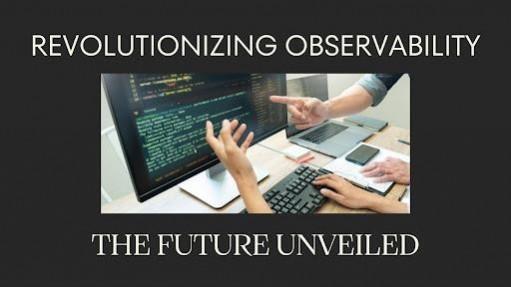
In today's rapidly evolving software landscape, observability has become critical for maintaining system performance and reliability. This article explores the innovations driving modern observability practices, focusing on logs, metrics, and traces the three pillars that form the foundation of successful monitoring strategies. With insights from Madhu Garimilla, we delve into the rising integration of AI and machine learning, the role of observability as code, and the adoption of OpenTelemetry, all shaping the future of proactive, scalable observability solutions.
The Three Pillars of Observability
At the heart of any successful observability strategy are three key pillars: logs, metrics, and traces. Logs provide a time-stamped record of system events, offering critical insights for diagnosing post-incident issues. By analyzing logs, engineers can detect patterns that contribute to system inefficiencies or failures.
Metrics deliver numerical data on system performance, such as CPU usage and error rates, allowing for proactive management through alerting when thresholds are breached. Organizations with mature observability strategies see a 66% reduction in the time required to resolve customer-impacting incidents. Lastly, traces map the flow of requests in distributed systems, revealing performance bottlenecks. As microservices architectures become more common, tracing enables engineers to pinpoint and resolve issues before they affect users, contributing to greater system reliability. Together, these pillars form a comprehensive approach to monitoring and optimization.
The Rise of AI-Enhanced Observability
As observability practices continue to evolve, one of the most exciting trends is the integration of artificial intelligence (AI) and machine learning (ML). These technologies enable predictive monitoring solutions that not only respond to issues as they occur but also anticipate potential system failures. AI-enhanced observability frameworks can automatically detect anomalies, predict outages, and even initiate self-healing processes to resolve problems before they affect users.
Industry reports indicate that AI-enhanced observability is poised to become a standard across major organizations. This shift is largely driven by the increasing complexity of distributed systems and the demand for more intelligent, proactive monitoring approaches.
Observability as Code and the Role of OpenTelemetry
Another notable innovation in the field is observability as code. This approach involves defining observability configurations in code, allowing teams to manage and deploy monitoring solutions alongside their application code. By treating observability as part of the software development lifecycle, organizations can ensure consistent, scalable monitoring practices that evolve alongside their systems.
Madhu Garimilla also discusses the growing adoption of OpenTelemetry, a vendor-neutral standard for collecting telemetry data (logs, metrics, and traces). OpenTelemetry enables developers to instrument their applications once and collect observability data from any source, reducing vendor lock-in and ensuring consistent observability across diverse systems.
Key Performance Indicators (KPIs) for Observability
An effective observability strategy starts by defining clear Key Performance Indicators (KPIs) that align with business goals. These KPIs should target areas such as system latency, error rates, throughput, and resource utilization. Latency, for example, can be categorized into network, application, and database latency, each offering insights into different aspects of system performance.
Tools like Prometheus for metrics collection and Grafana for visualization can be used to monitor KPIs in real-time. By setting appropriate thresholds and automating alerts when these are exceeded, organizations can promptly identify and address potential issues.
Looking Ahead: The Future of Observability
The future of observability rests on continuous improvement and adaptation. Observability practices must evolve in tandem with the systems they monitor. Emerging trends such as AI-driven predictive maintenance, continuous verification, and observability as code are poised to transform how organizations approach system monitoring. As systems become increasingly complex and distributed, the ability to gain deep insights into system behavior will be essential for maintaining performance, reliability, and user satisfaction. These advancements will play a crucial role in ensuring organizations stay ahead in managing and optimizing their systems.

















